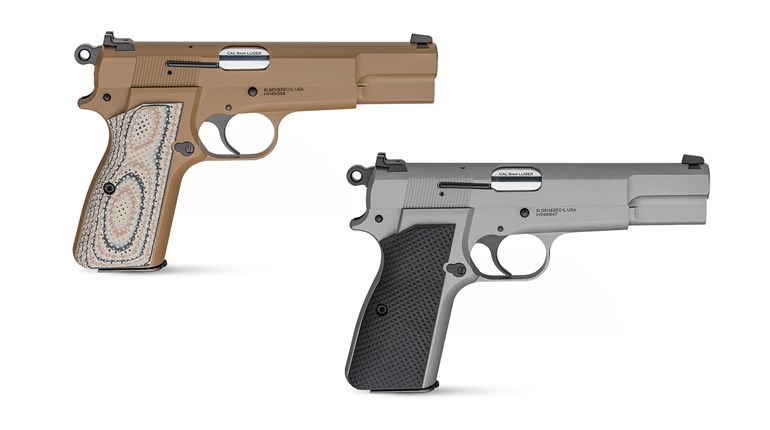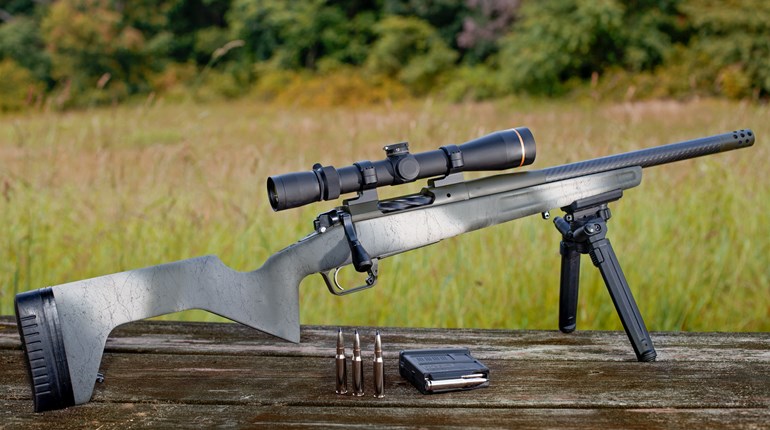
The stage involved the first target to be engaged from the starting box. It was narrowly bracketed by two no-shoot targets. It was a fairly precise shot for a defensive pistol match, but an easy shot without the constraint of time. The R.O. asked if I understood the course-of-fire, gave the command to load and advised me to nod when I was ready. Mentally, I drew and fired the first two shots; I took a deep breath and nodded my head.
We compete for a wide variety of reasons. During most of my competitive-shooting career, I’ve competed against myself, challenging myself to be a better shooter. My losses were when I performed badly and my wins were when I saw improvement in my skills. I achieved moderate success, locally being a fairly large fish in a relatively small pond.

Today, I’m generally the oldest guy in the squad, if not the entire match, and while my age is affecting my scores, I still enjoy the challenge. But I shoot defensive pistol matches for another reason now. We live in a volatile world and defensive-pistol events sharpen my skills, skills I hope I’ll never have to use, but the stakes are too high for apathy, even if the odds are low.
When the timer sounded, I executed my stage plan and when the last shot was fired and the R.O. asked if I was finished, I felt a twinge of concern, as I always do when asked that. I nodded and he told me I’d run the stage very well except I didn’t shoot the first shots that were to be fired from the starting box. In my mind, I’d fired those two shots, but in reality, they were only fired in my mental run through of the start of the stage. In spite of a fairly major screw up, I finished in the middle of the pack, not bad for an old man shooting an 18-ounce, three-inch barreled micro compact against full-sized guns.
I shoot defensive pistol matches with the gun I carry every day and I don’t carry a large pistol. Recently, my carry gun has been the excellent SIG P365. I live in the South and I dress light. There’s no place to hide even a compact carry gun, but I can easily carry a small gun in an appendix holster. In my opinion, the P365 changed everything with the magazine capacity of many full-sized guns and size and weight for maximum discretion.
Now, the SIG P365 has a challenger in the Springfield Armory Hellcat ($599, Springfield-Armory.com). At just over 18 ounces and with a three-inch barrel, it certainly qualifies as a Micro Compact, and it sports an even greater magazine capacity than the new standard of the class, the 365. As soon as I saw what Springfield Armory was releasing, I made a call to Chad Kimmer requesting a review gun. My plan was to shoot my club’s monthly Defensive Pistol match with it as a test of its mettle.

I’ve reviewed well over a dozen Springfield Armory rifles and pistols over my writing career and I’m pleased to say there wasn’t a bad gun in the bunch. In fact, I’ve never tested a Springfield Armory gun I wouldn’t recommend and I own a lot of them. I expected the Hellcat to be good, and I wasn’t disappointed. In size, it’s almost identical to the SIG P365 that’s taken the world by storm. This is remarkable because it ups the ante in capacity from 10+1 in the standard magazine to 11+1 and comes with an additional 13-round magazine.
It uses the new sandpaper-feeling grip surfaces that have recently become the norm on well-designed pistols. I particularly liked the small indented area forward on the frame. It’s a small oval-shaped lightly indented area that probably serves no real purpose, but it shows a new shooter exactly where his left thumb and trigger finger should be when the gun is gripped but off the trigger, something I find difficult to teach to new shooters. The grip is more angular than the SIG, some like this and some don’t. I’m neutral on this, I seem to be less sensitive to grip shape than most.

The flat-faced trigger uses a blade to enhance safety and is certainly sufficient for defensive use. Sights are a U-shaped rear with a white outline and a large bright tritium front. Both are dovetailed into the slide. There’s a visible chamber indicator window as well as tactile ability to check the chamber via the external extractor. After removing the magazine and checking for clear, takedown is standard with a 90-degree rotation of the takedown lever and a pull of the trigger. The recoil spring is a dual-spring system and the frame rails are generous and steel. The magazine release is flush on the side and accessible by reaching forward to engage. This has value—protruding magazine releases can be unintentionally depressed in concealed-carry guns that ride very close to the body.
As one might imagine, recoil in an 18-ounce 9mm pistol can be snappy, but the grip surface and a firm grasp created a sustainable hold for me when shooting double taps in the match. I could get three fingers on the grip with the 11-round magazine and the 13-rounder provided ample room. I really liked the front sight, and while I see white outlines as a distraction, that can be easily corrected with a Sharpie pen. Loading a Barney bullet into the chamber at the beginning of the stage allowed me a total of 25 rounds, one in the chamber, 11 in one magazine and 13 in the other. I was able to run all stages without running out.

Accuracy was quite good and in a stage with two hands, strong-hand-only and support-hand-only, I managed to ring the plates with less rounds than anyone else in my squad. Recoil was snappy, but I suffered no discomfort firing in excess of 100 rounds during the match. I had zero difficulty with magazine changes, but small guns like this require a bit more finesse than full-sized guns. The magazine release was easy enough to find, but you must swing the heel of your strong hand away from the grip to allow the magazine to drop.
As mentioned earlier, I finished in the middle of the pack, quite good for an old man with a tiny gun. And, the Hellcat garnered a lot of attention. I used the excellent Alien Gear Cloak Tuck holster for the match and didn’t feel handicapped on the draw. It worked well and isn’t visible with my shirt tail out. When you consider just how small the Hellcat is, and the challenges of a Defensive Pistol match, it’s a remarkable testament to the capabilities of this tiny gun. Springfield Armory certainly has a winner in this one.
Lead photo by Jesse Snyder.
See more:



































